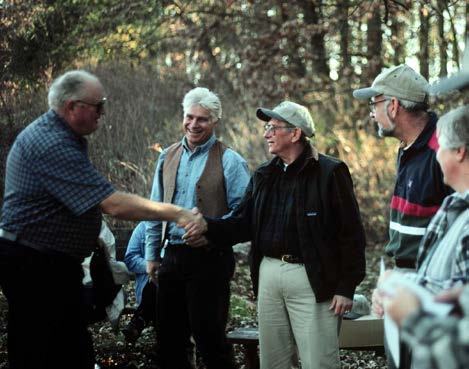Site Visits
Recommended Equipment
The following equipment is recommended for conducting a site visit:- Base maps and aerial photos of the site and surrounding area.
- A notepad and clipboard for taking field notes.
- A still camera or video recorder.
- A measuring device (preferably on wheels).
- Appropriate clothing, including boots, construction hat and durable outerwear.
- Identification as a member of the plan commission or planning and zoning staff.
Meck, Stuart. “Site Visits: Purpose, Planning and Practice.” Zoning Practice, Issue 2, February 2005. American Planning Association.
Many local officials conduct a site visit prior to making decisions on proposed rezonings, conditional uses, subdivision plats, and other development decisions. A site visit can be used to verify the accuracy of information submitted as part of an application and to gain a hands-on understanding of the site and its context. Using a combination of field notes, photographs and video recordings, local officials record the characteristics of the site and surrounding properties, including topography, vegetation, surface water, drainage, streets, buildings, utilities, parking and circulation patterns. This information can be used to identify potential conflicts between the proposed development and neighboring uses and to identify limitations of the site that may require additional analyses or mitigation.

Plan commission members have several options for conducting site visits. If plan commission members visit the site as a group, they must comply with the requirements of Wisconsin’s open meetings law, including providing advance notice of the meeting and allowing the public to access the site.4 To avoid these requirements, some communities require plan commission members to visit the site individually. Others restrict site visits to planning and zoning staff. If a site visit is performed by staff, the staff should take photographs or a video recording of the site and prepare a detailed staff report to share with the plan commission.
Before anyone may physically access a property for a site inspection, permission must be obtained in writing from the landowner. Most communities include a signature line on the application granting this authority. For example, one community provides: “By the execution of this application, the applicant hereby authorizes the City or its agent to enter upon the property during the hours of 7:00 A.M. to 7:00 P.M. daily for the purposes of inspection. This authorization applies even if the applicant has posted the land against trespassing pursuant to Wis. Stat. § 943.13.”
4The purpose of a site visit is to gather information related to making a decision of a governmental body, therefore, both the numbers and purpose test of the open meetings law are met.
Plan commission members conduct site visits to gain a better understanding of the physical limitations of properties and their neighboring uses.




